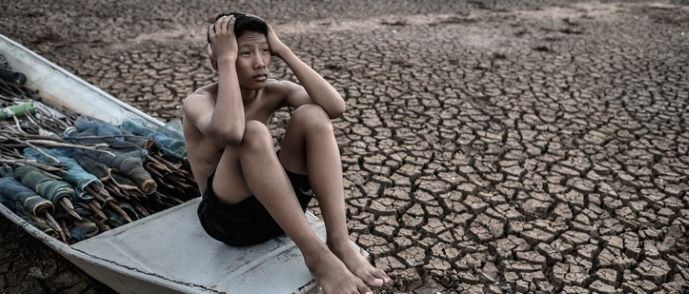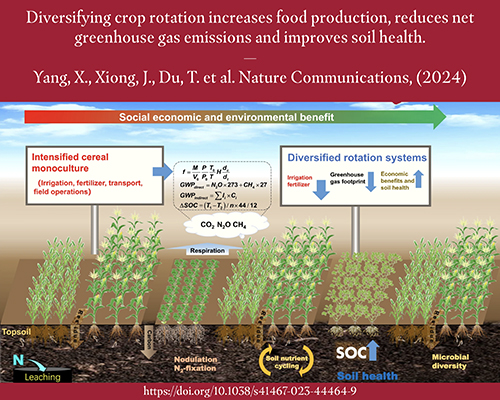Report on Natural Disaster Mitigation and the Role of Earth Observation in Achieving Sustainable Development Goals
The Impact of Natural Disasters on Sustainable Development
Natural disasters present a significant impediment to the achievement of the Sustainable Development Goals (SDGs). An analysis by the United Nations Office for Disaster Risk Reduction (UNDRR) covering the period from 1998 to 2017 highlights the scale of this challenge:
- Approximately 7,250 major disaster events were recorded globally.
- These events resulted in the loss of over 1.3 million lives, directly undermining SDG 3 (Good Health and Well-being).
- The associated economic losses and disruption to livelihoods threaten progress on SDG 1 (No Poverty) and SDG 11 (Sustainable Cities and Communities).
While flooding and storms were the most frequent events, earthquakes were the most lethal, accounting for nearly 750,000 fatalities. The increasing frequency of extreme weather events due to climate change further complicates efforts to meet SDG 13 (Climate Action) by exacerbating these risks.
Utilizing Earth Observation Data for Disaster Risk Reduction and Resilience
A comprehensive understanding of community vulnerability and exposure is fundamental to disaster risk reduction, a core target of SDG 11. NASA’s Earth-observing satellites provide critical data that supports mitigation, prevention, and management strategies, aligning with SDG 17 (Partnerships for the Goals) by making scientific data accessible for global benefit.
Data-Driven Strategies for Achieving SDG Targets
NASA provides global datasets that are instrumental in building resilience and informing policy aligned with the SDGs. These resources include:
- Hazard Data: Global data on phenomena such as floods, droughts, cyclonic storms, earthquakes, and extreme heat events allows for improved risk assessment, directly supporting SDG 11.5 (substantially reduce the number of deaths and the number of people affected by disasters) and SDG 13.1 (strengthen resilience and adaptive capacity to climate-related hazards).
- Socioeconomic Data: Datasets assessing exposure and vulnerability help identify at-risk populations, enabling targeted interventions to protect communities and infrastructure, thereby advancing SDG 1 and SDG 11.
- Near Real-Time Data: The Land, Atmosphere Near real-time Capability for Earth observations (LANCE) system provides timely information crucial for effective disaster response and relief efforts, which helps minimize human and economic losses.
Available Data Products for Hazard Analysis and SDG Monitoring
A range of data products is available to enhance the understanding of specific natural hazards and support SDG-related reporting and implementation. Key data products include:
- Hazard frequency and distribution maps
- Climate risk projections
- Mortality risk measures
- Economic loss risk deciles
These products inform the study of numerous hazards, including:
- Tropical Cyclones
- Earthquakes
- Volcanic Eruptions
- Extreme Heat
- Floods
- Landslides
- Droughts
- Wildfires
1. Which SDGs are addressed or connected to the issues highlighted in the article?
-
SDG 11: Sustainable Cities and Communities
- The article’s primary focus is on natural disasters, their impact on communities, and the importance of mitigation, prevention, and management. This directly relates to making human settlements safe and resilient. The text mentions understanding “the vulnerability and exposure of a community to a disaster” and using data for “disaster response and relief efforts.”
-
SDG 13: Climate Action
- The article explicitly links natural disasters to climate change, stating, “Climate change will likely increase the frequency of extreme heat and other extreme weather events in the coming decades.” It also mentions data products like “climate risk projections,” which are crucial for strengthening resilience to climate-related hazards.
-
SDG 1: No Poverty
- The article discusses the impact of disasters on communities, including “economic loss risk deciles” and the use of “socioeconomic datasets to help assess the exposure and vulnerability of communities.” Disasters can cause significant economic losses, pushing vulnerable populations further into poverty. Building resilience, a key theme of the article, is central to poverty reduction in the context of disasters.
-
SDG 3: Good Health and Well-being
- The article highlights the severe health impacts of disasters by citing mortality statistics, such as disasters “killing over 1.3 million people” between 1998 and 2017. It also mentions “mortality risk measures” as a key data product, which is directly related to managing global health risks associated with natural hazards.
2. What specific targets under those SDGs can be identified based on the article’s content?
-
Target 11.5
- “By 2030, significantly reduce the number of deaths and the number of people affected and substantially decrease the direct economic losses… caused by disasters…” The article directly addresses this target by quantifying the impact of disasters, mentioning that they killed “over 1.3 million people” and affected “millions of people every year.” It also refers to “economic loss risk deciles” as a data product for analysis.
-
Target 13.1
- “Strengthen resilience and adaptive capacity to climate-related hazards and natural disasters in all countries.” The entire premise of the article—using Earth-observing satellite data to understand, mitigate, and manage disasters like floods, storms, and extreme heat—is about strengthening resilience and adaptive capacity. The mention of “climate risk projections” further supports this.
-
Target 1.5
- “By 2030, build the resilience of the poor and those in vulnerable situations and reduce their exposure and vulnerability to climate-related extreme events and other… disasters.” The article’s emphasis on understanding “the vulnerability and exposure of a community” and providing “socioeconomic datasets to help assess” these factors directly aligns with building resilience for vulnerable populations.
-
Target 11.b
- “…implement… holistic disaster risk management at all levels.” The article supports this target by describing how data aids in the “mitigation, prevention, and management of the disaster” and enables a “data-driven approach to disaster response,” which are core components of holistic disaster risk management.
3. Are there any indicators mentioned or implied in the article that can be used to measure progress towards the identified targets?
-
Number of deaths and people affected by disasters
- The article explicitly provides data on mortality, stating that disasters were “killing over 1.3 million people” and that “close to 750,000 people died from earthquakes” in a 20-year period. It also notes that disasters “affect millions of people every year.” These figures are direct measures for indicators related to SDG Target 11.5.
-
Direct economic loss from disasters
- The article mentions “economic loss risk deciles” as one of the data products available. This implies a system for measuring and categorizing economic losses resulting from disasters, which is a key indicator for SDG Target 11.5.
-
Frequency and distribution of natural hazards
- The article mentions “roughly 7250 disasters between 1998 and 2017” and refers to “hazard frequency and distribution maps” as a data product. This information serves as an indicator of the prevalence and geographic spread of natural hazards.
-
Availability of data for early warning and disaster risk reduction
- The article’s focus on NASA’s “near real-time data” for disaster response and the provision of data products like “climate risk projections” and “mortality risk measures” implies the existence and use of systems that support disaster risk reduction strategies. This can be used as a proxy indicator for the implementation of such strategies (related to SDG Targets 11.b and 13.1).
4. Create a table with three columns titled ‘SDGs, Targets and Indicators” to present the findings from analyzing the article. In this table, list the Sustainable Development Goals (SDGs), their corresponding targets, and the specific indicators identified in the article.
| SDGs | Targets | Indicators (Mentioned or Implied in the Article) |
|---|---|---|
| SDG 11: Sustainable Cities and Communities | Target 11.5: Significantly reduce deaths, number of people affected, and economic losses from disasters. |
|
| SDG 13: Climate Action | Target 13.1: Strengthen resilience and adaptive capacity to climate-related hazards and natural disasters. |
|
| SDG 1: No Poverty | Target 1.5: Build the resilience of the poor and reduce their vulnerability to disasters. |
|
| SDG 3: Good Health and Well-being | Target 3.d: Strengthen capacity for early warning, risk reduction and management of health risks. |
|
Source: earthdata.nasa.gov







